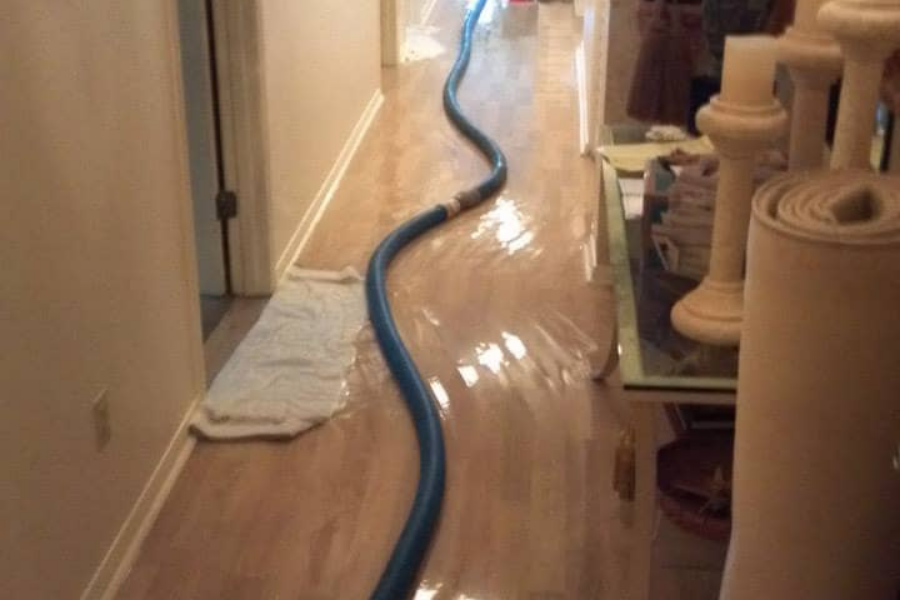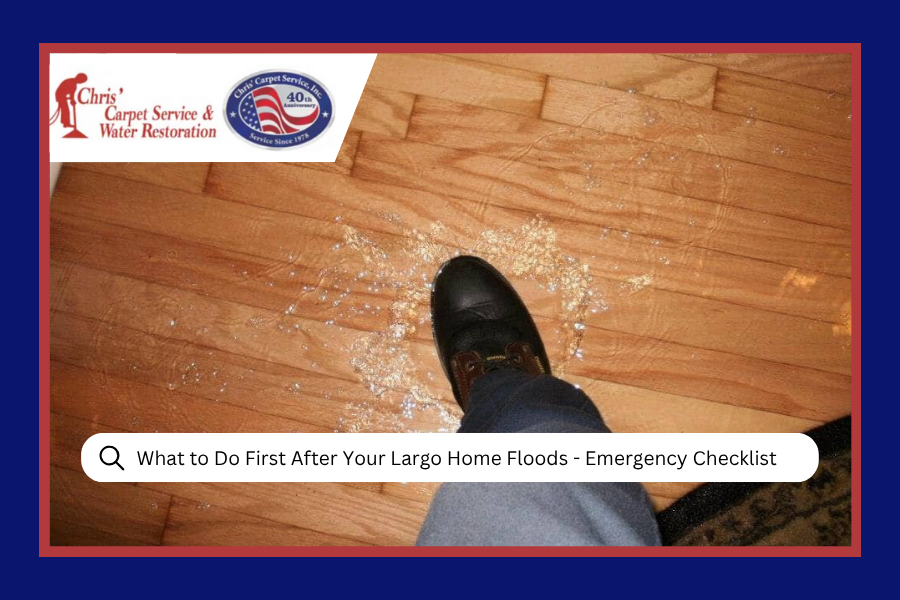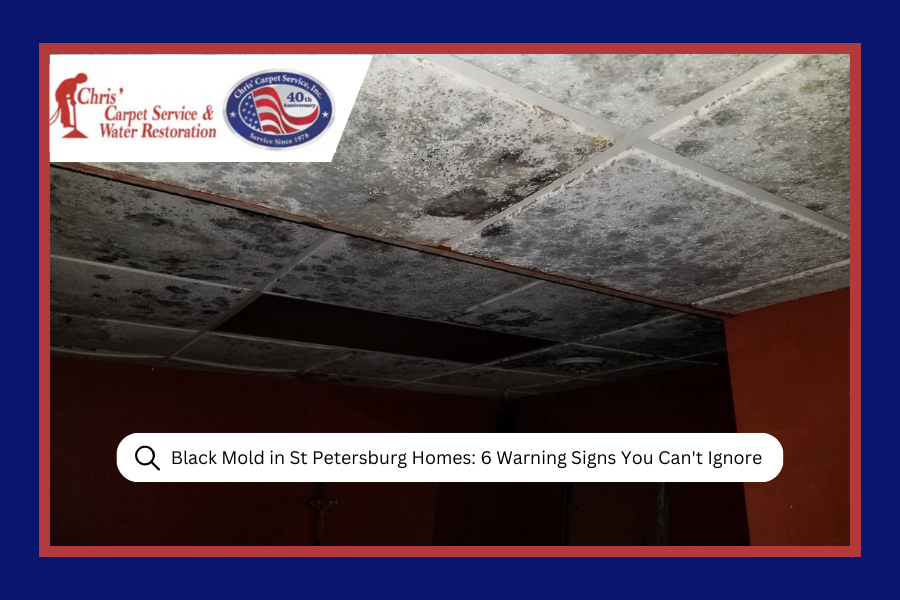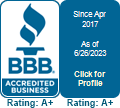What to Do First After Your Largo Home Floods: Emergency Checklist
Quick Navigation
When you discover flooding in your Largo home, those first few minutes can feel like chaos. Your heart's pounding, you're staring at water where it shouldn't be, and you're probably wondering if you're looking at thousands of dollars in damage. Take a deep breath. We've been helping Tampa Bay families navigate flood emergencies since 1976, and we're here to walk you through exactly what to do when disaster strikes.
Whether it's from a burst pipe, storm surge, or an appliance malfunction, flooding requires immediate action. Our water damage restoration team in Largo has seen it all, and we know that having a clear plan can save you time, money, and a lot of stress.

Standing water in your home requires immediate action to prevent extensive damage and costly repairs.
Immediate Safety First: Protect Yourself and Your Family
Before you do anything else, safety comes first. We can't stress this enough. Water and electricity don't mix, and flood water can contain contaminants that pose serious health risks.
Electrical Safety Checklist
Your first priority is preventing electrocution. Here's what you need to do immediately:
Emergency Safety Checklist
⚡ Electrical Safety
- Turn off main breaker if safely accessible
- Never enter flooded areas with submerged outlets
- Use flashlight, not candles
- Call electrician if unsure
🛡️ Health Safety
- Wear protective gear
- Avoid flood water contact
- Keep children and pets away
- Don't drink tap water if contaminated
Health and Safety Precautions
Flood water isn't just water. It can contain sewage, chemicals, and debris that make it dangerous to touch.
- Wear protective gear: rubber boots, gloves, and eye protection if available
- Avoid contact with flood water whenever possible
- Keep children and pets away from affected areas
- Don't drink tap water if there's any chance of contamination
Stop the Source: Prevent Further Damage
Once you've ensured everyone's safety, your next mission is stopping more water from entering your home. Every minute counts here.
Quick Action Checklist:
- Locate and turn off the main water supply if the flooding is from a plumbing issue
- Move to higher ground any valuable items you can safely reach
- Use buckets, towels, or tarps to redirect water away from your home's foundation
- Document everything with photos for insurance purposes (but only if it's safe to do so)
At about 30% through dealing with a flood emergency, you'll realize this isn't a DIY situation. This is when you'll want to call professionals who understand the complexity of water damage. Ready to get help fast? Our emergency response team at Chris' Carpet Service & Water Restoration is available 24/7.
Document Everything for Insurance Claims
Your insurance company will want detailed documentation of the damage. The more thorough you are now, the smoother your claims process will be later.
Essential Documentation Steps
- Take photos and videos of all damaged areas, belongings, and the water source
- Make a written inventory of damaged items with estimated values
- Save receipts for any emergency expenses like temporary lodging
- Keep detailed notes of when the flooding started and what caused it
- Don't throw anything away until your insurance adjuster has seen it
We work directly with insurance companies and understand their requirements. Just like we explain in our guide about water damage insurance coverage , proper documentation can make the difference between a smooth claim and a frustrating battle.
As we discussed in our detailed post about common causes of water damage , understanding the source helps determine your next steps.
Begin Water Removal and Drying Process
Time is your enemy when it comes to flood damage. The longer water sits, the more damage it causes. Mold can start growing in as little as 24-48 hours, especially here in Florida's humid climate.

Professional water extraction equipment can remove thousands of gallons quickly, preventing further structural damage.
DIY Water Removal (For Minor Flooding)
If the flooding is minimal and you can handle it safely:
- Use a wet/dry vacuum to remove standing water
- Set up fans and dehumidifiers to promote air circulation
- Open windows and doors if weather permits to increase ventilation
- Remove wet carpets, rugs, and furniture to prevent further damage
Flood Severity Assessment Guide
| Water Depth | DIY Possible? | Professional Required? | Urgency Level |
|---|---|---|---|
| Under 1 inch | Yes (if clean water) | Assessment recommended | Low |
| 1-2 inches | Maybe | Strongly recommended | Medium |
| Over 2 inches | No | Immediate | High |
| Contaminated water | Never | Emergency | Critical |
When to Call Professionals Immediately
Some situations require immediate professional intervention:
- More than 2 inches of standing water
- Contaminated water from sewage or storm drains
- Structural damage like sagging ceilings or floors
- Electrical hazards that prevent safe access
Remember, what looks like a small flood can hide serious problems behind walls and under floors. Our article about emergency steps for water damage covers additional professional assessment indicators to watch for.
Protect Your Health: Mold Prevention Strategies
Florida's climate makes mold growth a serious concern after any flood. We've seen too many families deal with expensive mold remediation in Largo because they didn't act quickly enough during the initial flood response.
Immediate Mold Prevention Actions
- Remove wet materials quickly: carpets, drywall, insulation, and furniture
- Clean and disinfect all surfaces that contacted flood water
- Maintain air circulation with fans and dehumidifiers
- Monitor humidity levels: keep them below 50% if possible
Know When to Evacuate vs. Stay and Fight
Not every flood requires evacuation, but some situations demand that you leave immediately for your family's safety.
Evacuation Triggers
Leave your home immediately if you notice:
- Rising water levels that show no signs of stopping
- Structural compromise: cracking walls, sagging ceilings, or shifting foundations
- Sewage contamination that poses serious health risks
- Persistent electrical hazards you can't safely address
Staying Safe During Cleanup
If you're staying to manage the situation:
- Work in teams: never handle flood cleanup alone
- Take breaks: exhaustion leads to poor judgment and accidents
- Stay hydrated and fed: emergency situations are physically demanding
- Check in regularly with family or friends about your status
Special Considerations for Largo and Pinellas County Residents
Living in Pinellas County means dealing with unique flood challenges. We don't have basements here, but we do have storm surge, heavy rains, and aging infrastructure that can create flooding situations.
Storm-Related Flooding
Our area faces regular storm threats, and we've helped countless families recover from hurricane and tropical storm damage. If your flooding is storm-related, be aware that:
- Municipal services might be overwhelmed during major weather events
- Roads may be impassible for emergency services
- Power outages can complicate cleanup efforts
- Multiple properties in your neighborhood may be affected simultaneously
For storm damage specifically, check out our experience tackling flood damage after Hurricane Helene to see how we help families recover.
You can also learn more about our comprehensive services for St. Petersburg water damage situations.
Local Resource Awareness
Know your local emergency resources:
- Pinellas County Emergency Management: 727-464-3800
- Largo Fire Rescue: 911 for emergencies
- Pinellas County Utilities: Report water main breaks or sewer issues
- Local hardware stores for emergency supplies (though they may run low during widespread events)
- Red Cross Disaster Relief: Visit the American Red Cross for emergency shelter information
- FEMA Flood Resources: Check Ready.gov's flood guide for comprehensive flood preparation and recovery guidance
Learning about flood damage restoration in Largo FL ahead of time helps you understand what professional recovery involves.
Creating Your Family Emergency Plan
Every family should have a flood emergency plan before disaster strikes. Here's how to create one that works for your household:
Essential Plan Components
- Emergency contact list: including family, friends, and restoration professionals
- Important document storage: keep copies of insurance policies, IDs, and financial records in waterproof containers
- Supply kit location: know where your emergency supplies are stored
- Evacuation routes: plan multiple ways out of your neighborhood
- Pet care arrangements: don't forget your furry family members
Practice Makes Perfect
- Review your plan annually with all family members
- Update contact information regularly
- Check emergency supplies every six months
- Consider seasonal challenges like hurricane season preparation
Why Professional Help Makes All the Difference
While this checklist gives you the essential first steps, flood damage restoration is complex work that requires professional expertise, specialized equipment, and industry certifications. We're IICRC certified in water damage restoration and mold remediation, and we've been serving the Tampa Bay area for nearly 50 years.
Professional restoration isn't just about removing water. It's about completely drying structures, preventing mold growth, salvaging belongings, working with insurance companies, and restoring your home to pre-loss condition. When you're facing flood damage in Largo , you need a team that understands both the technical challenges and the emotional stress you're experiencing.
Don't Wait - Flood Damage Gets Worse Every Hour
Our certified restoration team is standing by 24/7 to help you through this emergency. We'll be there in 60 minutes or less.
Call (727) 888-5111 NowRemember: Your safety and your family's wellbeing are the most important things. Property can be restored, replaced, or rebuilt. You can't be. When in doubt, err on the side of caution and call for professional help.
Frequently Asked Questions
Should I turn off my electricity first or stop the water source first during a flood emergency?
Always prioritize electrical safety first, but only if you can reach the main breaker without stepping in water. If the main electrical panel is in a flooded area, don't risk electrocution. Instead, call your utility company to shut off power from outside your home. Only after ensuring electrical safety should you focus on stopping the water source. This sequence prevents potentially fatal accidents during the chaos of a flood emergency.
What items should I prioritize moving to higher ground when I only have minutes to act?
Focus on irreplaceable items first: family photos, important documents (insurance policies, birth certificates, passports), prescription medications, and small electronics like computers or external hard drives with important data. Don't waste precious time trying to move heavy furniture, which can often be restored or replaced. Create a "grab and go" emergency box ahead of time with copies of essential documents so you're not scrambling during an actual emergency.
How do I know if flood water in my home is contaminated and dangerous to touch?
Assume all flood water is contaminated until proven otherwise. Water from burst supply lines is generally cleaner, but any flood water that has touched the ground, mixed with sewage, or sat stagnant for more than a few hours likely contains bacteria, chemicals, and debris. Specific warning signs include foul odors, discoloration, visible debris, or water that came from storm drains, toilets, or washing machines. When in doubt, treat it as hazardous and wear protective gear.
If I follow this emergency checklist perfectly, can I avoid needing professional flood restoration services?
This checklist helps minimize damage and keeps you safe, but professional restoration is usually still necessary for anything beyond minor, clean water incidents. Hidden moisture behind walls, under floors, and in HVAC systems requires specialized equipment to detect and remove. Even if you successfully remove visible water, Florida's humidity means mold can still develop in areas you can't see or reach. Professional assessment within 24-48 hours helps ensure nothing is missed that could cause expensive problems later.







